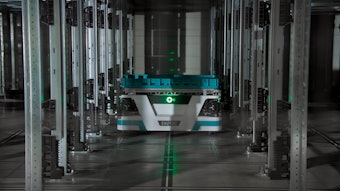
Today, commercial food logistics and delivery fleets are increasingly electrifying, transitioning to zero-emission electric vehicles (EVs) instead of traditional gas or diesel-powered alternatives.
Utilizing EVs, the industry can significantly reduce operational costs, which is ideal for high-mileage commercial food logistics delivery fleets. Fuel costs, a major expense in urban delivery routes characterized by frequent stop-and-go traffic, are considerably reduced with EVs. Additionally, EVs require minimal maintenance due to a simpler design with fewer moving parts and the absence of a combustion engine or oil. EVs also reduce noise pollution, which is desirable for densely populated areas.
Among EVs in the industry, vans, trucks, and specialty vehicles play a crucial role in food logistics. These vehicles, which ensure the safe, efficient, and timely transportation of perishable and non-perishable food items from suppliers to consumers, are designed to maintain necessary food safety while optimizing delivery routes and handling.
Now substantial financial incentives, which offset a large portion of the initial purchase price of an EV, are playing a crucial role in accelerating the industry’s transition to electrification.
The transition to electric fleets
Industry leaders in food logistics and delivery are already making the move to electrification, adopting EVs as part of their sustainability initiatives. For instance, some firms have incorporated EVs into their fleets and implemented solar-powered technologies to improve operational efficiency and reduce fuel consumption. These efforts represent a broader shift across the logistics industry toward environmentally friendly practices.
There are numerous advantages to using EVs for commercial fleets. Logistics fleets can significantly cut fuel expenses while avoiding the unpredictability of fluctuating fuel prices. EVs equipped with electric drivetrains require less maintenance and offer greater longevity compared to traditional combustion engine vehicles. EVs also operate with less noise and vibration, making them ideal for early-morning or late-night deliveries and improving comfort for drivers on long hauls.
Features like regenerative braking help capture and reuse energy lost during braking, extending a vehicle’s range, particularly in stop-and-go traffic. Combined with improved battery technology, many commercial electric vehicles now offer up to 150 miles per charge, a distance far greater than the daily mileage driven by most delivery vehicles.
Financial incentives
The financial rationale for electrifying commercial food delivery fleets is also extremely compelling, with several states offering substantial financial rebates or tax credits that reduce upfront purchase costs.
There is increasing demand across the United States to electrify delivery fleets, spurred by incentives at the state and federal level.
Some programs entail California’s Hybrid and Zero-Emission Truck and Bus Voucher Incentive Project (HVIP), which offers rebates on the base vehicle ranging from $20,000-240,000 depending on the type of vehicle purchased.
The New Jersey Zero Emission Incentive Program (NJ ZIP) offers vouchers toward the purchase of new, zero-emission vehicles ranging from $20,000-175,000, depending on the class of vehicle. NJ ZIP is a $90 million voucher pilot launched by the New Jersey Economic Development Authority (NJEDA) for medium and heavy duty zero-emission vehicles. The pilot is funded by the Regional Greenhouse Gas Initiative proceeds allocated to NJEDA for the purposes of reducing harmful emissions, particularly in communities disproportionately impacted by transportation emissions, and creating economic opportunity within the state.
Thanks to California’s HVIP and New Jersey’s NJ ZIP incentives, small business owners in those states can significantly reduce the upfront costs to purchase electric vans and trucks.
Texas, New York, Oregon, Washington, and Colorado, are among the states also offering rebates for commercial EVs. Additionally, countries like Canada provide a range of subsidies and incentives to support similar initiatives.
The advantages of electrifying commercial food delivery fleets combined with these incentives are spurring early interest and orders. U.S. based manufacturers have moved beyond concepts and early prototypes to full production.
Like some consumer EVs, these vehicles utilize a combination of aluminum for the body and high-strength steel in its construction. Aluminum reduces vehicle weight significantly, which means less energy is required to move the vehicle and the range of the vehicle increases. A lighter vehicle also enhances acceleration, braking, and handling. The aluminum body is 95% recyclable, much like a large soda can.
To support these initiatives, a variety of electric delivery vans and truck types are offered to accommodate a range of delivery and logistics requirements and environments.
Vans
Various types of logistics and delivery vans are available. The compact size and maneuverability of logistics vans make them suitable for navigating narrow streets and congested urban areas.
These vehicles are integral to supply chain operations, particularly for last-mile delivery, moving inventory between warehouses, and serving retail operations. As an example, refrigerated vans, also known as reefer vans, are commonly used for last-mile food deliveries, such as transporting groceries or meal kits directly to consumers.
Cutaway vans typically feature a cab and chassis that can be modified into box trucks. Their adaptability makes them popular in food logistics and delivery services.
Urban trucks
Urban trucks are medium-sized vehicles specifically built for city use, offering enough space for food deliveries while being easy to drive through crowded streets. Their compact design and agility make them perfect for city centers with narrow roads and stop-and-go traffic.
Specialty vehicles
Specialty vehicles, such as food service trucks and mobile grocery units, provide direct-to-consumer food access.
For food truck use, box trucks can be “upfitted” with refrigeration and freezer units, and those that serve prepared meals in urban and event settings can even be outfitted with kitchen facilities as well as storage for ingredients.
Expanding support and infrastructure
As the use of EVs expands across the United States, including within food delivery fleets, the infrastructure needed to charge and support these vehicles is being installed across the country.
In anticipation of the need, some manufacturers are helping to facilitate the rollout. As an example, in response to increased demand from NJ ZIP customers, one company has expanded the capability of its New Jersey service center in Manalapan, New Jersey by adding battery balancing and service equipment and capabilities. In addition, the service center features multi-point vehicle inspections and repairs, including tires and brakes. This will allow customers to get vehicles repaired and back in service faster.
The transition to EVs represents a pivotal opportunity for commercial logistics and delivery fleets. With substantial operational cost savings, reduced environmental impact, and enhanced efficiency, EVs present a compelling case for businesses ready to innovate and align with modern sustainability goals.

























